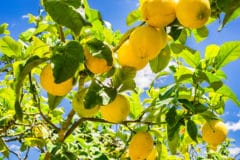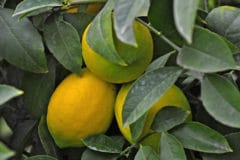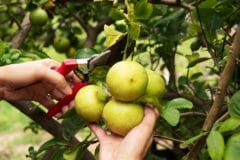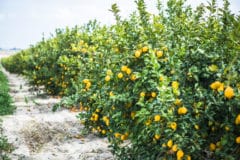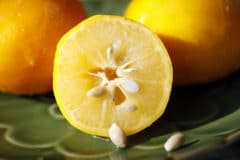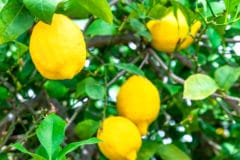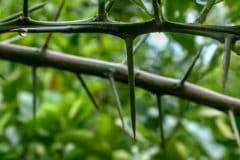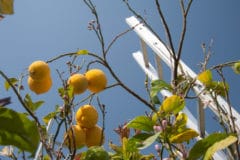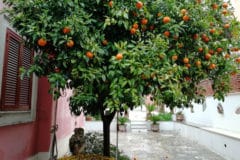Bush Lemon Origins
More commonly known as rough lemons, bush lemons (Citrus jambhiri) originated in northeastern India. Portuguese explorers carried them to North Africa in the late 11th century. From there they spread to Europe and the Americas.
Appearance
Bush lemons grow on bushy, small (up to 13 feet) trees. In the right conditions, they flower and fruit all year long. Fragrant, purple-tinged white blossoms and dense canopies of glossy green leaves make them appealing landscape additions.
Fruit
Bush lemon trees are most notable for their abundant thorns and curious fruit. Slightly larger than standard lemons and covered with thick, deeply wrinkled rind, it bears a striking resemblance to small, orange-yellow brains.
Many people find bush lemons’ sour and dryish pulp unpleasant on its own, but their juice is often boiled down with sugar to make a tasty syrup or jelly.
Bush Lemon Rootstock
For improved drought tolerance, lemon growers in Arizona and other hot, dry areas graft sections (scions) of their trees to rough lemon rootstock. But the drawbacks of using it as a rootstock outnumber the benefits. They include:
- Sensitivity to waterlogging and Phytophthora root rot disease.
- Low resistance to root-devouring citrus nematodes.
- The tendency for its grafted sections to produce sour, thick-skinned fruit.
Expert gardener’s tip: Trees grafted to the rootstock also have a tendency to sprout suckers. Unless removed, these baby rough lemons will rob the scion of water and nutrients and eventually engulf it. Immediately after the last spring frost, prune them back to the trunk.
Where to Grow a Bush Lemon Tree
Like most true lemons, the bush lemon grows in USDA plant hardiness zones 9 through 11. It needs a well draining soil and is happiest in one containing a good amount of sand. What it doesn’t like are salty sea breezes and cold wind.
Plant it in a wind-sheltered spot, preferably near a south-facing wall where reflected heat will provide some frost protection. Like true lemons, it suffers damage after a few hours below 29°F (-1.7°C).

